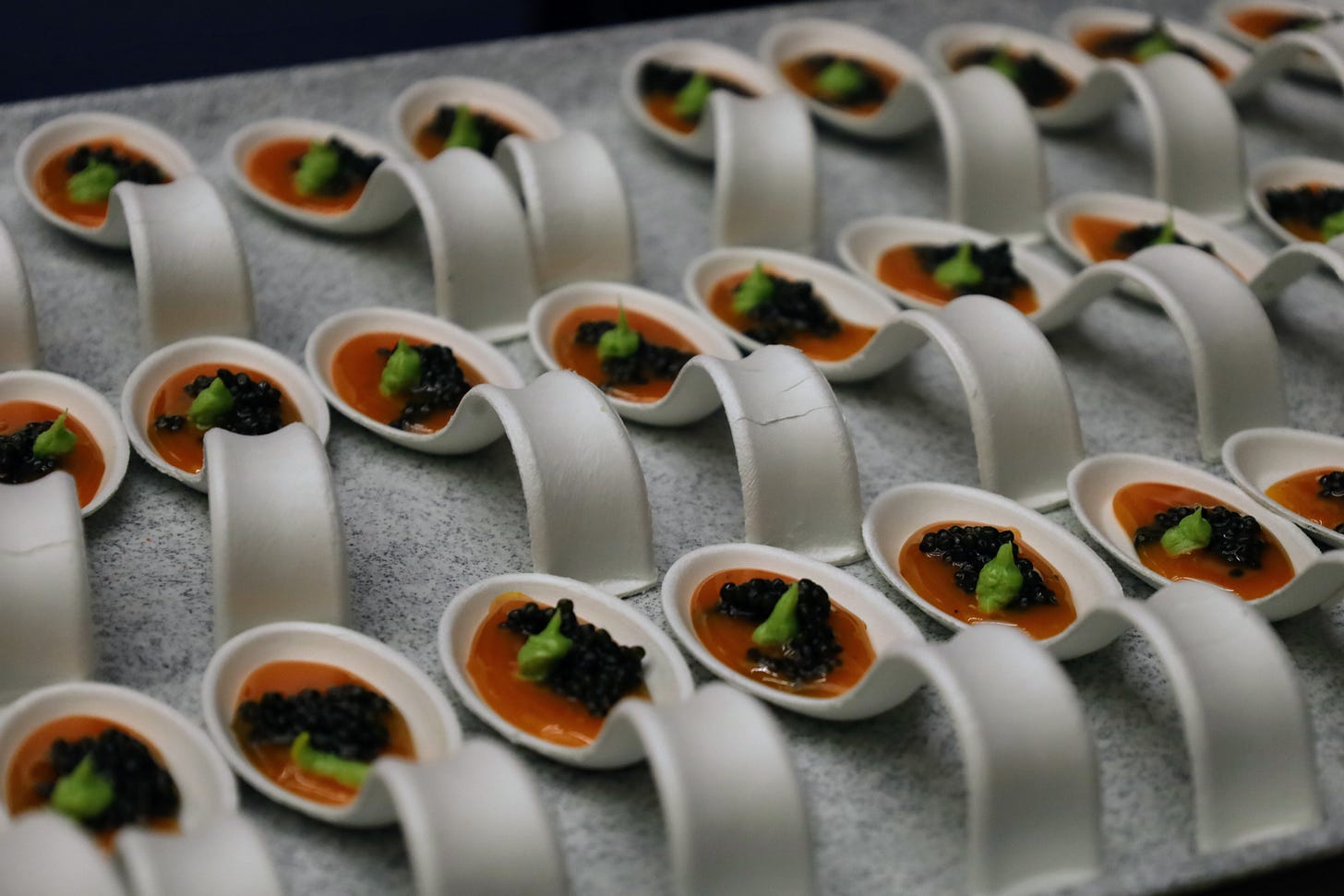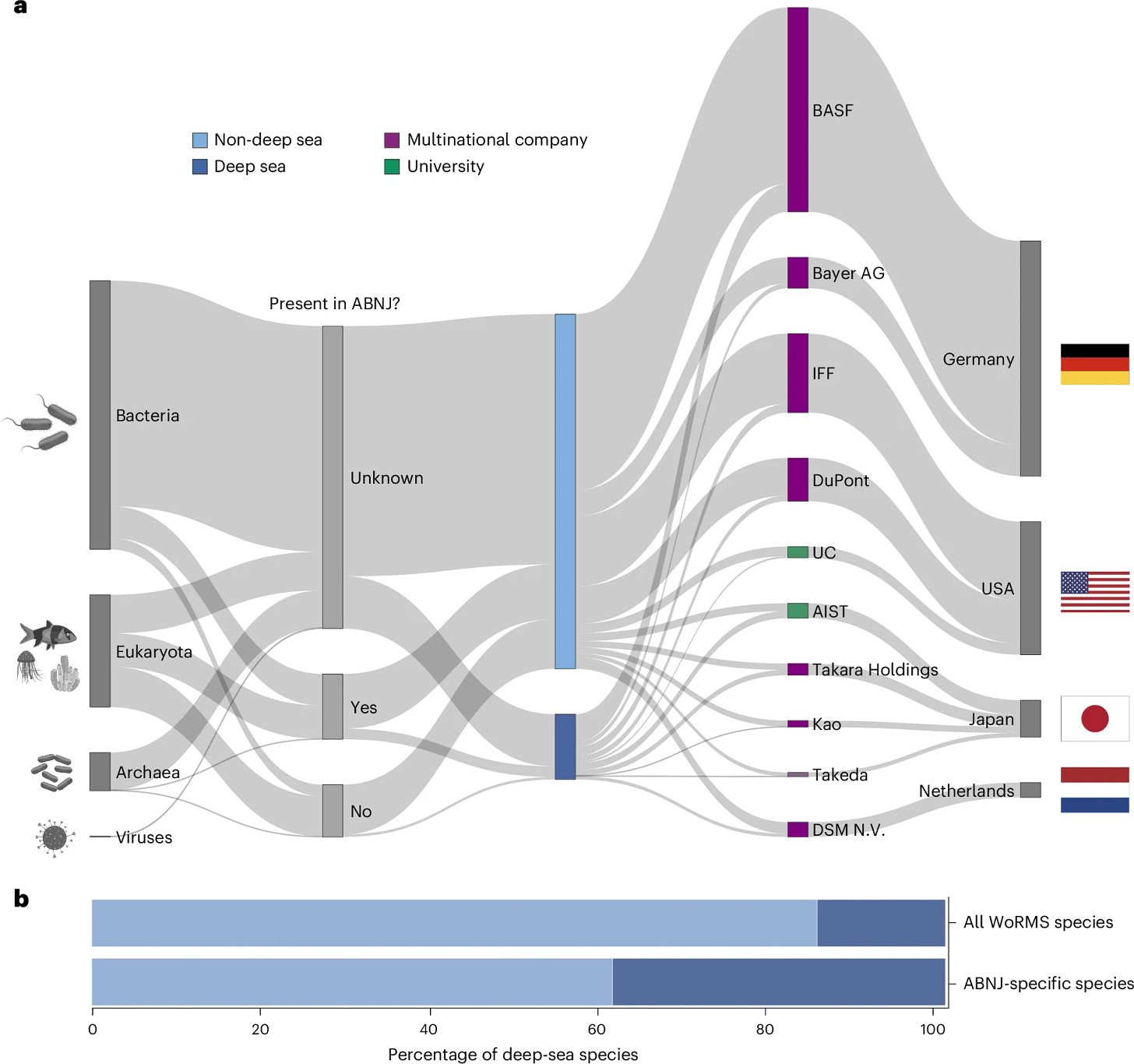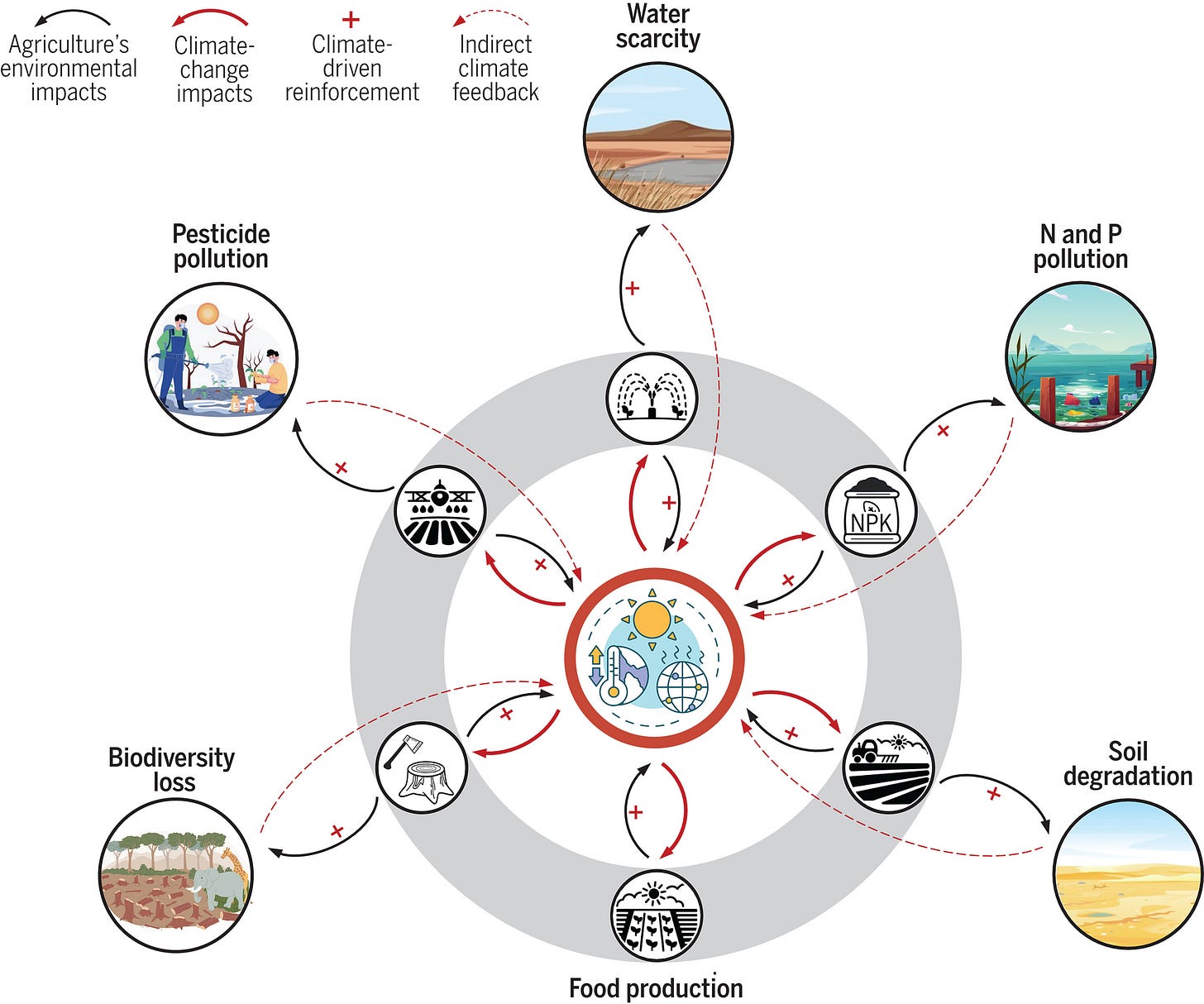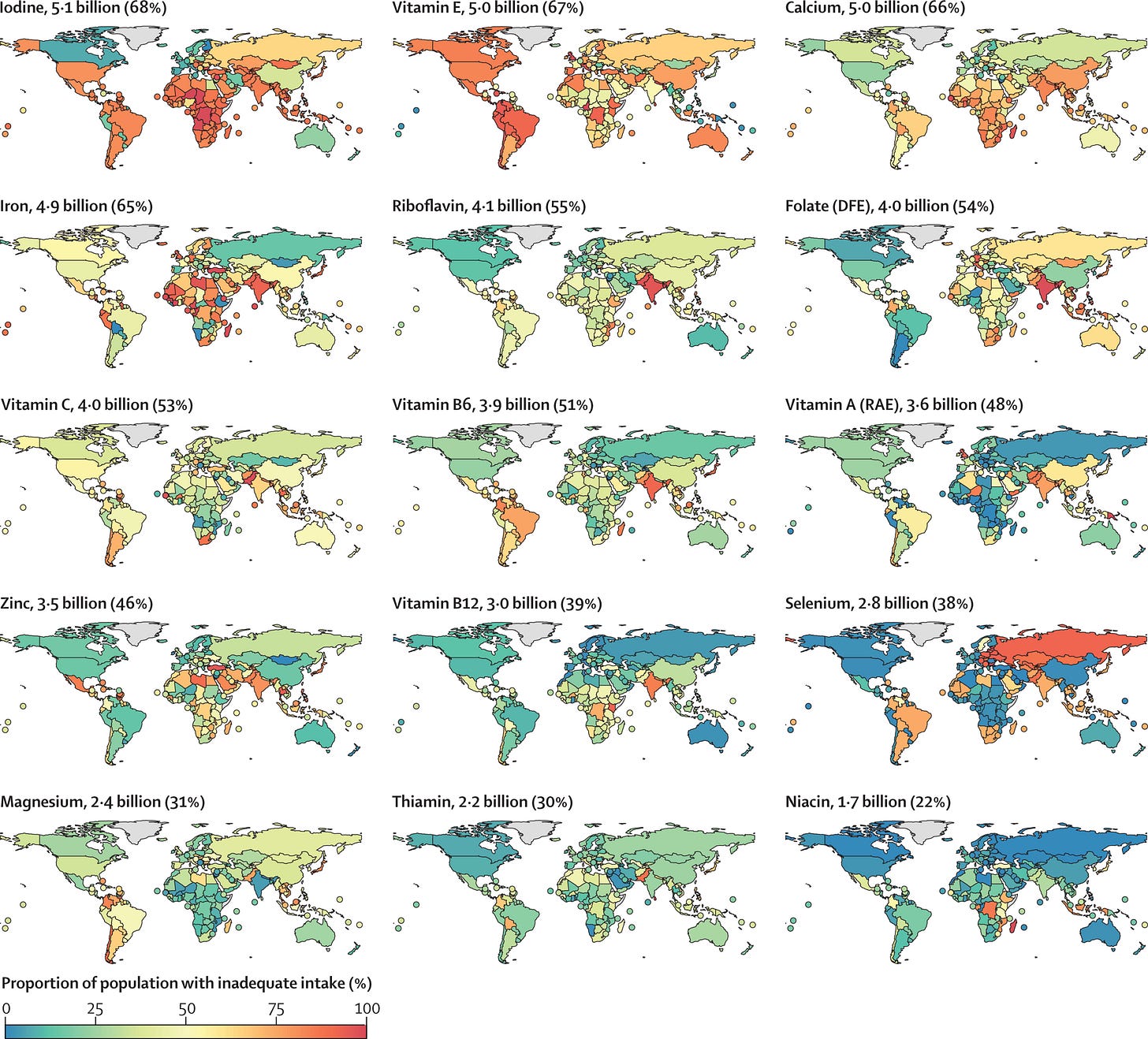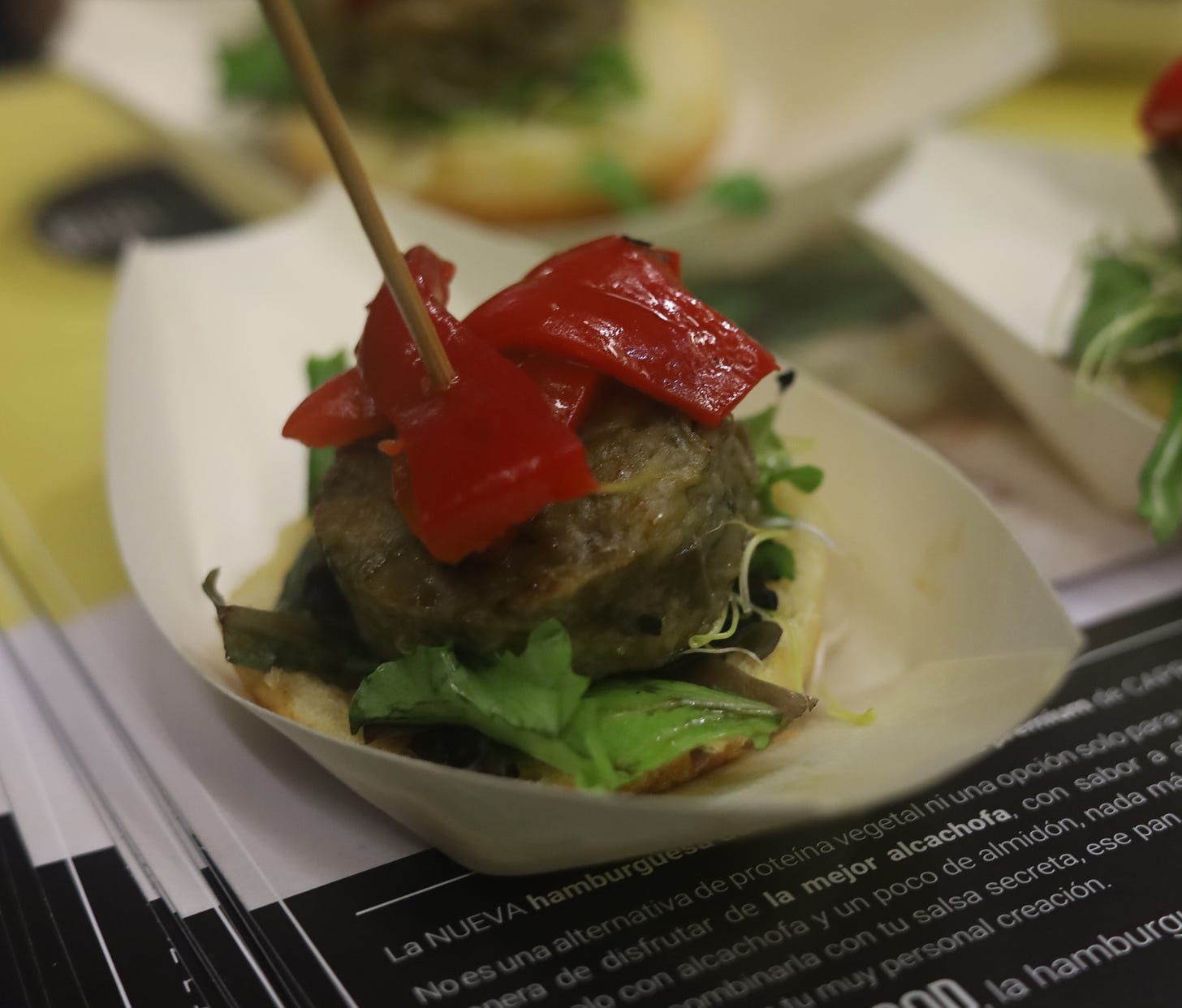Thin’s Bite-Sized Pickings
Interesting stuff that (mostly) came out during Summer
A friend once asked me if I could find enough stories every week for Thin Ink. I told them I wish I had a daily newsletter because there are so many interesting things to write about!
Don’t worry, I won’t inflict a daily newsletter on you. There are so many great ones out there already and we all have so little time. My inbox have a folder - “newsletters to read” - that keeps increasing in size. So I know the struggle. Besides, doing a free weekly one is already quite the labour of love.
That’s why I’m aiming for the best of both worlds this week with a list of interesting studies and stories you may have missed because most of them came out over the past two months.
Studies
Who owns our oceans? (Part II)
For generations, we’ve been using plants, animals and microorganisms in our environment to come up with products for treating medical conditions, improving our looks, or making our lives more comfortable. Scientists call this “bioprospecting”.
A recent study from researchers at the Stockholm Resilience Centre and University of Vienna looked at the increasing use of deep-sea marine organisms for bioprospecting and got some pretty eye-opening results.
Four private companies - Germany’s BASF and Bayer and America’s IFF (International Flavors & Fragrances) and DuPont - control nearly 50% of all patents derived from marine genetic resources (MGRs), a technical term that includes all organisms found in marine environments, ranging from plankton and microbe to sperm whale and sea urchin. BASF, Bayer, and DuPont are chemical giants with massive agricultural operations.
In addition, Four highly-industrialised countries - the U.S, Japan, Germany, and the Netherlands - hold more than half of all patents issued from MGRs.
The paper, published in Nature Sustainability, is (thankfully) freely accessible. The researchers also built a database “to provide a useful insight into the scope and scale of marine bioprospecting”. The database is worth digging into.
A 2018 paper on a similar topic by some of the same authors had said the corporate landscape with regard to marine genetic resources “is already far more consolidated than the seeds industry, although this development has not drawn public attention or scrutiny”.
A key enabler of this situation was the lack of protection of the high seas, which covers 64% of the world’s ocean and nearly half of the Earth’s surface, and are extremely rich in biodiversity and natural resources.
This perpetuated global inequality and raised sustainability concerns: those with technical and financial means exploit the open ocean for private profit. I wrote about it in a previous newsletter: Who Owns Our Oceans?
Less than 1% of these areas were highly or fully protected up until Jun 2023, when nations adopted a treaty after two decades of intense and protracted negotiations.
Still, benefit sharing remains a contentious issue and it’ll be interesting to see how that is handled going forward. So my thanks to the researchers for shedding light on a topic (IP rights) that is often shrouded in secrecy.
Definitely not the fish!
“We studied 230 fisheries around the world. We found populations of many overfished species are in far worse condition than has been reported, and the sustainability of fisheries was overstated,” wrote Graham Edgar, senior marine ecologist at the University of Tasmania, in The Conversation.
Why am I quoting from an op-ed and not the actual paper? Because the study he was involved in, published in Science, is behind a paywall. Same also for a perspective piece that accompanied the study.
URGH! Yes, I will complain, ad infinitum, about the fact that important scientific papers are out of reach of ordinary people. I’m basing this write-up on press releases, media reports, and the op-ed. Let’s get back to the topic at hand.
The researchers provided examples to illustrate their findings.
Take the intriguingly-named jackass morwong (also known as deep sea perch) which is found off southern Australia and New Zealand.
In 2009, models estimated the total stock size for south-eastern Australia at 4,680 tonnes, and this number helped fisheries managers to decide how many of that fish could sustainably be caught in future years. But modelling in 2014 indicated that the stock size in 2009 was more likely to have been 3,330 tonnes and the initial stock size was larger.
“The inaccurate estimates mean the “total allowable fish catch” set by the Australian Fisheries Management Authority for jackass morwong is likely to have been unsustainable,” added Graham.
The results? The numbers of this fish has declined so much by 2022 that the authorities closed some areas to trawl fishers and planned to buy back fishing vessel permits.
On average, assessments overestimated fish stocks by 11.5%, according to the authors, although some have rubbished the findings (see this NYT piece for the criticism).
Meanwhile, over here on land…
Climate change “could amplify the environmental impacts of agriculture” , according to another paper published in Science last week, and which AGAIN is behind a paywall.
Agriculture’s environmental impacts already include significant greenhouse gas emissions, the highest usage of freshwater, increasing rates of soil erosion, and nitrogen and phosphorus pollution from fertilisers, and rising health impacts from pesticides.
The paywall didn’t deter me this time, because as a registered journalist, I was able to download an embargoed copy. It is a comprehensive review of existing research on this topic conducted by a team of international researchers from China, America, the UK and more.
The findings are sobering, indicating that the hardest work is yet to come.
Climate change could exacerbate agriculture in multiple ways, including by:
Directly and negatively affecting agricultural productivity due to higher temperatures and changes in rainfall. This could could in turn lead to more land being cleared, harming wildlife and biodiversity, and could also result in greater use of polluting and greenhouse-gas-emitting chemical fertilisers and pesticides.
Reducing the efficacy of agrochemicals and increasing their loss to the environment. This might cause farmers use them more, worsening pollution and accelerating the vicious cycle.
Increasing crop pests and soil erosion. The former could lead to higher use of pesticides. The latter could reduce yields and emit higher levels of nitrous oxide. And then we’re back to problems and impacts described in points (1) and (2).
Climate change could also “intensify agricultural GHG emissions directly - for example, through increasing methane emissions from rice paddies, nitrous oxide emissions from soil, and carbon dioxide emissions from land clearing and soil tillage.”
Not all is lost though. There are solutions. The difficult part is in implementing them all and not just the easy ones.
For example, we should diversify our crops so we’re not so reliant on a handful of them, use biological controls instead of chemicals to manage pests, implement measures that maintain and improve soil health, and reduce the amount of crops used for feed or fuel. At the same time, we need to shift to more nutritious and plant-based diets and make them more affordable.
Local residents around the world, tired of living with the negative consequences of modern agricultural practices, are taking matters into their hands. Take Netherlands - Meten=Weten is a citizen-led association that conducts their own research into the spread of pesticides and local residents recently won a court case to stop farming that relies on a lot of pesticides. (See more below in Stories.)
Where malnutrition is already a big problem
More than half of the global population are not consuming adequate levels of essential vitamins and minerals needed to maintain critical functions in our bodies, warned the first study to provide global estimates on micronutrient deficiencies.
“More than 5 billion people do not consume enough iodine (68% of the global population), vitamin E (67%), and calcium (66%). More than 4 billion people do not consume enough iron (65%), riboflavin (55%), folate (54%), and vitamin C (53%),” it said.
Is that a problem? Well, let us count the ways.
“Iron deficiency is the most common cause of anaemia, leading to impaired cognition and adverse pregnancy outcomes.
Vitamin A deficiency is the leading cause of preventable blindness globally, affecting mostly children and pregnant women.
Both vitamin A and zinc have a crucial role in immunity, especially for populations facing a high burden of infectious diseases.
Folate is needed early in pregnancy to reduce the risk of stillbirths and neural tube defects, and iodine is essential for pregnant and breastfeeding women because of its role in fetal and child cognitive development.”
So yeah, it’s a big, big problem.
The paper by researchers at Harvard T.H. Chan School of Public Health, UC Santa Barbara, and the Global Alliance for Improved Nutrition (GAIN) was published in The Lancet Global health last month and it is open access. Hallelujah!
Not only that, the authors have also made freely available the data for individual countries and their levels of intake on 15 micronutrients that are critical to human health, and the codes for analysis.
Stories
The case of the Dutch residents against lily growers (make sure your translation extension is on)
These stories broke in April and May but I’ve only become aware of them, and I’m sharing because I think they show the powers citizens can have.
The Netherlands is a major producer of flowers, whose cultivation require the use of pesticides. Lots of them in some cases.
Lily is the most resource-intensive crop, using 114 kilograms of plant protection products (a euphemism for “pesticides”) per hectare, according to the Central Bureau of Statistics.
So when a farmer wanted to grow lilies in a field adjacent to a residential area in Sevenum, a Dutch town in the province of Limburg, the residents went to court. The judge ruled in their favour a month later, saying there is a real risk to the health of residents and their children.
This is the second such case in recent history. Last summer, a judge in Drenthe ruled in favour of residents in Boterveen, telling the grower to immediately stop spraying pesticides. The court overturned this on appeal, but said the grower could use only four products instead of the 33 he previously used.
Injured Waters - Orion
Beautiful, thought-provoking piece by Sunaura Taylor, disability rights theorist and author of Disabled Ecologies, about how we view aquifers, what we’ve done to them, and the parallels between the legal definition of water bodies that have been polluted and damaged and that of human disability. Her back story seems as fascinating as her research.
“How different ecosystems are defined as impaired based on “designated use” and productivity is thinking that parallels legal definitions of human disability, which are often predicated on whether someone is unable to work and produce capital in a particular way.
“Such economic ways of thinking lead us down a dangerous path: Which impaired beings - human and nonhuman - are considered valuable enough to warrant the investment of treatment?”
The Coming Pollen Storms - Noema
An intimate piece from Monica Evans. She writes about how ryegrass, one of the main pasture crops in her rural area of New Zealand, used to flower in November and then die before the heat peaks in late summer and before the arrival of tropical storms.
But like in many other parts of the world, the rhythms are changing, and lately, “these storms and flower blooms have collided... And when they do, something strange sometimes happens.” People develop symptoms of asthma, even if you’ve never experienced it before.
“What does the climate crisis feel like in your body? It’s easier to imagine it in the form of large-scale, dramatic events: settlements swept away in floods, towns torched in wildfires. But for many of us it will make landfall in a multitude of more intimate ways: prodding respiratory systems, immune responses, sex drives and decisions about whether to have babies, build homes, or save money.”
Red Lobster was killed by private equity, not Endless Shrimp - Cory Doctorow
At first glance, this is a very U.S.-centric story about a very American restaurant chain going bust but is actually a parable about the impact of corporate concentration, monopoly and monopsony (when you have a single powerful buyer) on our food systems.
“Monopoly power and monopsony power begat more monopolies and monoposonies in the supply chain. Everything that hasn’t consolidated is defenceless: diners, restaurant workers, fishermen, and the environment. We’re all fucked,” wrote Cory.
It’s also a global issue, not least because when that ship went down, Red Lobster was owned by Thai Union, one of the world’s biggest seafood companies and also the restaurant’s biggest supplier!
African farmers are using private satellite data to improve crop yields - MIT Technology Review
Interesting piece from Orji Sunday on how space-based monitoring is helping producers in Nigeria to better plan and anticipate, among others, changes in weather and weed growth.
One of the services charges “$1.90 per hectare per year for small areas and (the prices) drop as the farm gets larger”.
African farmers definitely need help, particularly in adapting to changing climatic conditions, but I do have questions around who owns the data and whether smallscale farmers, who actually feed the local population instead of growing crops for export, will again be left behind, thus precipitating a wave of consolidation that will make African farms bigger and more like their counterparts in the U.S. and other developed nations.
I say this because one of the farmers using the service is growing cassava over a thousand hectares.
The World’s Coffee Mostly Comes From Two Countries. That’s a Problem - Bloomberg
“Some 40 countries grow coffee, but more than half of global production has long come from just two: Brazil and Vietnam. And when bad weather hits both — an increasing risk in a destabilised climate — prices soar,” wrote Ilena Peng and Tarso Veloso.
Enter small producers from places like Honduras, the DRC, and Uganda, which has so far been the domain of picky espresso drinkers who prefer small-origin coffees.
It seems some of the world’s biggest coffee brands (Starbucks, Nespresso, Illy and Lavazza) are already investing in supply chains in these countries (I have mixed feelings about that).
The For-Profit City That Might Come Crashing Down - New York Times
This story about Próspera, a privately-run city off the coast of Honduras with dreams of being a deregulated paradise (it has experimental medical facilities running trials “unburdened by F.D.A standards”), has absolutely no links to food systems. Unless we count the part where an old restaurant had been turned into “a Bitcoin education center and cafe”.
But it is a fascinating piece about corporate greed and hubris with eye-popping details: “In order to enter the jurisdiction, I was told I needed to sign an “agreement of coexistence” binding myself to 4,202 pages of rules,” wrote Rachel Corbett.
This is a new form of colonialism, just with corporate overlords instead of nation states. The story also gives an insight into the American libertarian mindset which, frankly, terrifies me.
As always, please feel free to share this post and send tips and thoughts on bluesky (brand new!) @thinink.bsky.social, mastodon @ThinInk@journa.host, my LinkedIn page, twitter @thinink, or via e-mail thin@thin-ink.net.


